
Colours are beautiful, colours are everywhere. Colours are what make our life so very special, and grab our attention and give us inspiration in this otherwise sullen, drab world. What if you could live in a city filled with such magical colours, and walk through streets that are a constant reminder of the rainbow?
Let’s take a look at the 10 Most Colorful Cities in the World:
1. Burano, Venice, Italy
It’s easy to spot the Venetian Island of Burano from the sea. The jewel-colored homes act like a beacon, which is what they were intended to be. According to island lore, local fisherman started painting their homes in bright colors hues of orange, red, yellow, and purple so they could see them while out fishing in the fog and could follow their colors back home. Now, the practice has become law, and if you live on the island and want to paint your home, you must ask for permission from the government, who will assign your home a color. For visitors, the homes are just a welcome dose of cheerfulness.
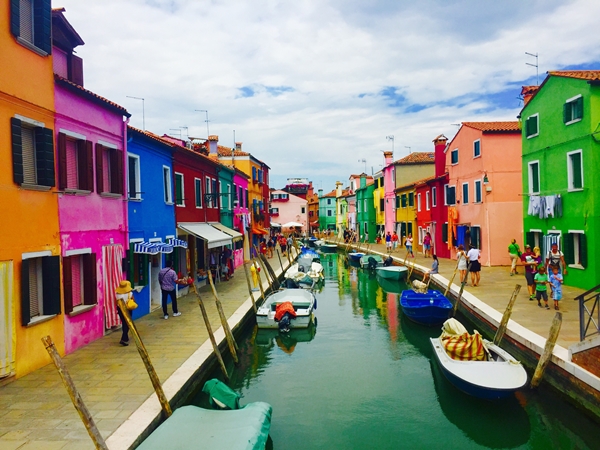
2. Bo-Kaap, Cape Town, South Africa
Bo-Kaap (also written Bo Kaap) is a multicultural neighborhood in Cape Town, South Africa, that is known for its brightly painted buildings and cobblestone streets. Formerly known as the Malay Quarter, it has been a predominantly Muslim district for more than a century, and it has one of South Africa's oldest mosques. Most inhabitants' ancestors are from the Indian subcontinent and insular Southeast Asia. Afrikaans has long been the language of this community, though English continues to gain ground. The historic two-story homes and bright paint schemes (pictured) have made this neighborhood a popular stop for tourist photo ops.

3. Willemstad, Curacao
The dazzling colors that adorn the capital city of this Caribbean island stem from an unlikely source headaches. According to local lore, back in the 1800s the governor of the Dutch colony decided that the color white caused his migraines. He issued a decree that buildings could be painted anything but white. Today, this jewel-colored city is an almost perfectly preserved Dutch colonial trading settlement with a UNESCO World Heritage designation.
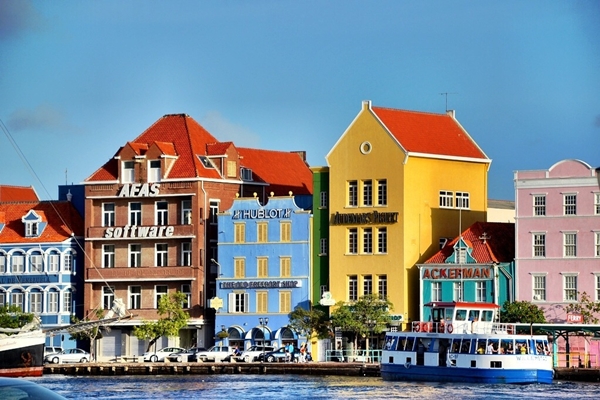
4. Jaipur, Rajasthan, India
The capital of the Indian state of Rajasthan, Jaipur is known as the Pink City. With a few exceptions, all the buildings within the historic city center are pink. This unusual color choice dates to the 19th century when a Rajasthani king ordered all buildings to be painted pink ahead of a visit by England's Prince Albert, the Prince of Wales, in 1876. The color choice was meant to evoke a sense of hospitality and welcoming. The unique visual appeal of Jaipur is enhanced by its architecture. The City Palace, Amber Fort and Hawa Mahal (pictured) are a few popular sites, while a host of temples, gardens and squares allow people the chance to fill out their sightseeing itinerary.

5. St. John’s, Newfoundland, Canada
Perhaps the most notable feature of the provincial capital of Newfoundland and Labrador is the row of colorful Victorian homes that runs through downtown. Called “jellybean houses” due to their wild red, blue, yellow, and green hues, the houses fill St. John’s with splashes of whimsy. Most of the homes are done with tasteful white trim, but others opt for a bit of discord with the color schemes. The colors began to appear in the 1970s, and many suspect this was done to cheer up a declining urban center. Whatever the origin, the homes are a bright spark on the island, particularly when the gray days of winter set in.
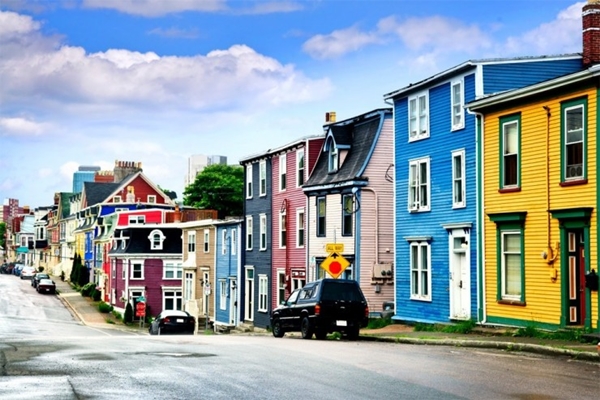
6. Valparaiso, Chile
This port city is the historical and cultural hub of Chile, with a wide array of museums, cathedrals, churches and colonial buildings. The coastal area is where beautiful boats, cruising this region, stop at. What’s even more magnificent about this part of the city is the multi-hued urban sprawl adorning the sea. The homes and the bohemian murals on the walls are a manifestation of the creative spirits of the citizens, and result in creating a splendour, especially from the acensores along the funiculars that provide a bird-eye view.

7. Jodhpur, Rajasthan, India
India’s Blue City, tucked into the Western state of Rajasthan, is a colorful reminder of India’s caste system. In the past, Brahmins, the so-called upper class, painted their homes in the royal hue of blue to differentiate their properties from those of the lower class. Over time, others just mirrored the effect. Even the city's Mehrangarh Fort got a solid coat of blue. Many suspect the color is now popular for a number of reasons including tradition. The blue paint’s chemical composition might be a good defense against termites, the color keeps dwellings cool in the blazing sun, and the vivid color is downright beautiful.
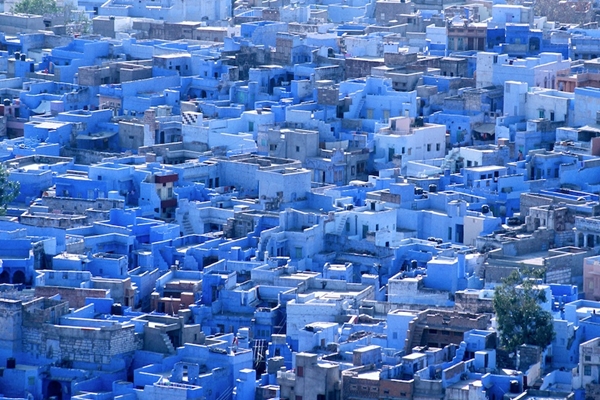
8. Guanajuato, Mexico
Located in the mountains of Central Mexico, Guanajuato was once a center of the silver mining industry. Visitors can trace the city's past by visiting the many 16th century plazas and churches scattered throughout the hillsides. Brightly painted buildings are found all around Guanajuato. Unlike many Mexican cities, this place is free from traffic jams. The narrow streets are simply too difficult for cars to navigate. Despite the pleasant setting, there are not many tourists in Guanajuato. Most visitors seem to prefer the similarly historic (but less colorful) San Miguel de Allende, about an hour away.

9. Chefchaouen, Morocco
The small and beautiful Chefchaouen city is nestled in the Rif Mountains of Northwest Morocco. This popular tourist town is known for its striking vivid blue-washed buildings. The bluish design of this city was introduced by Jewish refugees in 1930. The blue color considers as symbol of sky and heaven in Judaism. It also represents people must live their lives with spiritual awareness. The natives of Chefchaouen regularly repaint the buildings in blue shade in the memory of that old Jewish tradition and to keep the history alive. This bluish village glows differently in different time of a day. In Wet condition Chefchaouen also look like a clear blue water world.
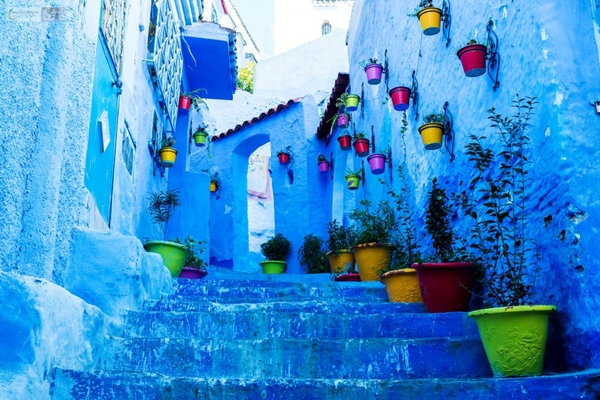
10. Santorini, Greece
When you think of the Greek island of Santorini, it's likely that two colors come to mind: White, which is the color of many buildings' walls, and blue, which is not only the color of the roofs, but of the sparkling Ionian sea the laps at the island's shore. In fact, the building facades of the city of Oia feature a number of other colors, but the blues and whites are so dazzling it's easy to simply fixate on them. Another surefire way to appreciate the vibrant rainbow of Oia is to take your shots at sunset on a clear day, when the prismatic sky casts its colorful light on the darkened cityscape.



